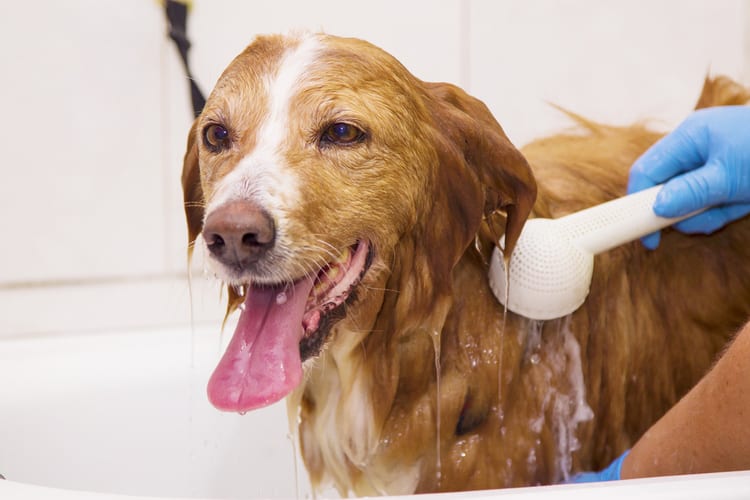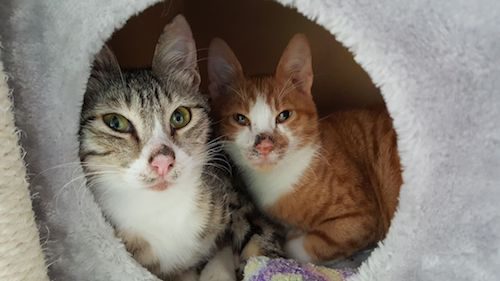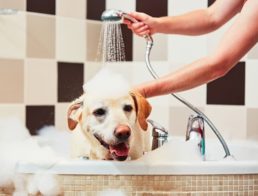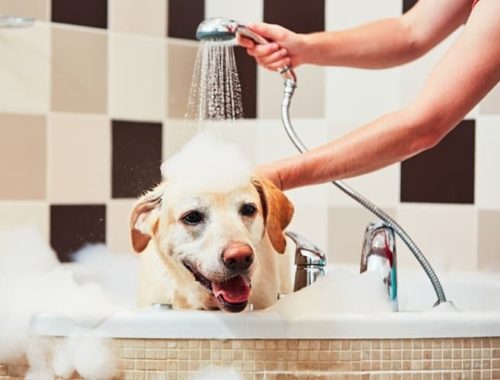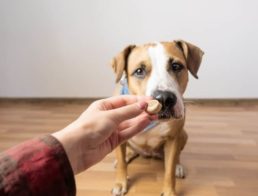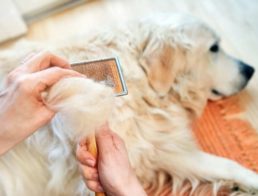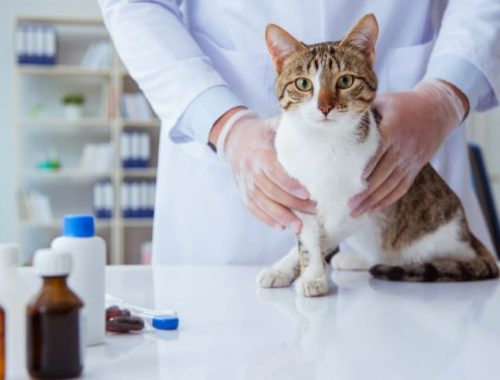The term “ringworm” is misleading. People typically get a circular lesion that looks a bit like a worm has burrowed under their skin, but in truth, ringworm is caused by infection with any of a number of fungal organisms that collectively go by the name “dermatophytes.”
What is Ringworm?
Dermatophytes are fungi that can be found in many natural and man-made environments.
Most of the time, a healthy immune system is able to prevent infection, but if an individual has a compromised immune system (e.g., is sick, very old, or very young), has skin damage, or they come in contact with a large number of fungal spores, ringworm is more likely to develop.
 How Can I Tell It’s Ringworm?
How Can I Tell It’s Ringworm?
The symptoms of ringworm in dogs can include any of the following. Itching may or may not be noticeable.
- hair loss or broken hairs
- flaky or crusty skin
- lumps in the skin that may drain liquid
- misshapen and brittle nails
None of these clinical signs are unique to ringworm. A dog must be seen by a veterinarian to definitively diagnose ringworm.
Diagnosing Ringworm in Dogs
The most commonly used diagnostic test for ringworm is the fungal culture. A veterinarian will pluck hairs from around skin lesions or comb the coat with a toothbrush and then “plant” the samples in a gel that selectively supports the growth of dermatophyte fungi. It can take several weeks for the results of a fungal culture to be finalized. In some cases, a skin biopsy or other tests may be necessary to definitively diagnose ringworm.
Veterinarians may use a black light to determine the best areas on the body to sample. Some types of ringworm give off a green glow under the black light. False positive and false negative results are common, so a black light should not be used on its own to diagnose ringworm.
It is also important to note that dogs can carry large numbers of fungal spores in their coats, but not show any signs of disease. These individuals can transmit ringworm to other pets and people. For this reason, your veterinarian may recommend screening all the animals in your home for ringworm.
Treatment for Ringworm in Dogs

Veterinarians may recommend that long-haired dogs be shaved to remove fungal spores in the coat and give topical treatments better access to the skin.
Lime sulfur dips are a good option for topical ringworm treatment. In most cases, veterinarians will recommend using the dip every 3-4 days. It should be applied to dry skin and fur and should not be rinsed off. Be aware that lime sulfur smells bad and can stain fur and surfaces in the home.
Miconazole and chlorhexidine shampoo can also be used to treat ringworm topically. Unless otherwise directed by your veterinarian, bathe your dog twice a week following the instructions on the product’s label.
For dogs with more severe cases of ringworm, veterinarians will also prescribe oral anti-fungal medications. Griseofulvin is a common choice, but other drugs such as itraconazole, ketoconazole, or terbinafine may also be recommended. Lufenuron, a medication more commonly used to prevent flea infestations, can be combined with other therapies but isn’t effective on its own.
Dogs may need to be treated for ringworm for two months or longer to completely eradicate the disease. Your veterinarian can tell you when it’s safe to stop treatment based on tests that screen for ringworm and your dog’s response to therapy. In the meantime, quarantine your dog in a bathroom or other easy to disinfect space.
Treating the Environment
Infected pets contaminate their environments with contagious fungal spores and risk spreading the infection to others or even reinfecting themselves after medications have been stopped. Therefore, a thorough cleaning is a necessary part of treatment.
- Throw out heavily contaminated bedding, area rugs, towels, etc.
- Run anything that can’t be thrown out through the washer and dryer.
- Vacuum floors, large rugs, furniture, and hard surfaces around your home. Safely dispose of the contents of your vacuum and disinfect it afterwards.
- Wipe down hard surfaces with a diluted bleach solution or another type of disinfectant that kills ringworm spores.
- Consider having your floors, rugs, and upholstery professionally cleaned.
Be sure to wear gloves, wash your hands, and change your clothes when you are cleaning or handling your dog. Finally, contact your physician if you or your family members develop skin lesions consistent with ringworm.
Featured Image Credit: tetxu, Shutterstock
